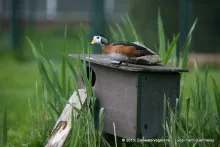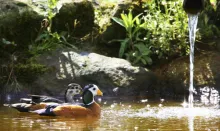
African Pygmy Goose (Nettapus auritus)
Species name
- Dutch name:
- Afrikaanse pygmeegans
- English name:
- African Pygmy Goose
- German name:
- Afrikanische zwergente
- French name:
- Anserelle naine
- Scientific name:
- Nettapus auritus
Scientific classification
- Order:
- Anseriformes
- Family:
- Anatidae
- Onderfamilie:
- Oxyurinae
- Genus:
- Nettapus
Description
- Description:
Male:
(Breeding) White Forehead, Face, throat, and foreneck, with iridescent greenish-black crown and stripe down hindneck. Large sea foam Green patch on sides of upper neck, extent ending onto rear of cheeks, bordered with black. Lower part of foreneck, breast and upper flanks bright chestnut orange sometimes with fine black barring on breast and upper flanks; belly white, vent and undertail converts black. Entire upperparts black, strongly glossed green, especially on scapulars; tail black outer and inner wing black, glossed green with large white patch on grater converts and outer secondaries; underwing dark. Bill dark yellow with black nail. Legs and feet dark grey.Call:
High pitched whistling Calls.Female:
Head and neck whitish, with ill-defined brownish-grey markings forming broken eye stripe and patches on cheeks and upper neck; crown and back of neck blackish. Underparts similar to male, though chestnut orange slightly of the chest and flanks slightly duller but lacking any black barring. Upperparts look alike male, but with reduced green iridescence. Bill dull yellowish grey; legs and feet dark grey
Call: a weak quack .Juvenile:
As female, but with more obvious dark eye stripe and less clear markings on cheeks and neck; breast and flanks paler, more buff in tone.
- Behaviour:
Sadly African pygmy geese have a reputation of being difficult to maintain in captivity, they are certainly not easy but provided a few simple rules are followed they are not nearly as difficult as much of the literature suggests. While African pygmies are diminutive they are certainly not shrinking violets, unless a very significant area can be provided it is my contention that it is virtually impossible to maintain two or more pairs together when they are in breeding condition.
Standard Measurements
- Body Length (cm):
- The male (drake) of the African Pygmy Goose measures approximately 30-33 centimeters. The female measures approximately 30-33 centimeters.
- Body Weight (grams):
- The male will weight about 285 gram. The female will weight about 250 gram.
The weight is notoriously variable and can only be used as indication!
- Habitat:
In the wild pygmy geese spend most of their life on the water but do also frequently perch on overhanging branches of dead trees and are only rarely seen on land. They have very short legs and consequently do not walk well on land and for this reason they are much better maintained full winged in an aviary. Unlike many species of waterfowl their flight is very agile and if disturbed they will take flight but even in relatively small aviaries it is unusual for them to collide with the sides of the aviary so flight can be enjoyed in a very natural way. If housed in an aviary where they are the only waterfowl they will thrive but can be kept with other species if care is taken. When the Africans are in breeding condition they will try and dominate other species that may be significantly larger and while this is not a problem there is always the risk that the larger species may turn on the African pygmy and inflict significant damage so it is much safer to keep them on their own.
- Note:
African pygmy geese are delicate and breed extremely rarely in captivity. They may be best maintained fully-flighted in an aviary. A raised nest box should be provided. The normal laying period is May to September. Ducklings apparently feed by straining small particles from the water. Feeding may be stimulated by rapidly moving fingers in a dish of water containing fine feed; this may be required for three weeks or more. Duckweed may also be useful to encourage feeding, but may itself be too large for young downies to eat. Supplemental tube feeding has been useful in downies during the initial rearing period.
African pygmy geese are delicate and cold-sensitive, requiring protection and heat at night in winter. A sunny enclosure in summer, containing a well-vegetated pond, combined with a spacious heated tropical house in winter has been suggested. Nutritious fine-size food, including small seeds such as millet, with additional duckweed and similar fine green food suggested.
Male African pygmy geese take a very active part in nest site selection, a variety of raised nest boxes should be provided but the requirements do not appear to be particularly exacting. As the pair come into breeding condition the male will start flying up to nest boxes and calling quite loudly and very soon afterwards the female will also start flying up to the chosen nest box. The males do not actually enter the nest box but really do appear to actively encourage the female to inspect the box. Once a nest box has been selected the female will very quickly start to make a nest. With most species of waterfowl the female will make little more than a depression, scrape, one or two days prior to laying the first egg. Female African Pygmy Geese make quite a deep scrape in the nest box and if straw is available in the box they will line the scrape and effectively make much more of a nest prior to laying the first egg than any other species of waterfowl.
- Breeding:
- The female African Pygmy Goose usually lays from 8 creamy white eggs and incubates them for 24 days.
- Artificial incubating:
The ideal relative humidity for incubating most waterfowl eggs is 55% (ground nesters) and 40% (cavity nesters). The temperature is usually 37.4°C. Set ventilation as recommended by the incubator manufacturer. Eggs must be turned, either automatically or by hand, a minimum of 4 times a day. As the duckling develops there is a loss of water from the egg and the air sac gets bigger. In normal development of an egg with a 24 days incubation, the air sac occupies about a third of it three days earlier. Cleanliness is vital and ideally eggs should be moved to a separate hatcher at this point, where the humidity should be increased to 65% and even higher once they have pipped internally.
- Bird banding:
- Recommended closed leg band ring size for the African Pygmy Goose is 6 mm.The leg band ring can only be applied on a young perching duck at around 10 days old.
- It doesn't matter what leg that you band, but it's good to have a consistent system. Suggested: Left leg = Female, Right leg = Male
- Rearingfeed:
-
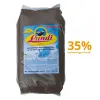
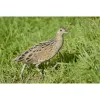

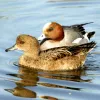


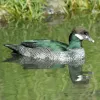 Floatable special rearing feed for all ornamental waterfowl species, even for problematic eaters. This ideally balanced complete feed with 35% protein content forms the basis for healthy growth and lifelong vitality. Made exclusively from wholesome and selected raw materials, Lundi Micro is also ideally suited for the year-round feeding of waterfowl.
Floatable special rearing feed for all ornamental waterfowl species, even for problematic eaters. This ideally balanced complete feed with 35% protein content forms the basis for healthy growth and lifelong vitality. Made exclusively from wholesome and selected raw materials, Lundi Micro is also ideally suited for the year-round feeding of waterfowl.
- Maintenance food:
-






 Floatable special rearing feed for all ornamental waterfowl species, even for problematic eaters. This ideally balanced complete feed with 35% protein content forms the basis for healthy growth and lifelong vitality. Made exclusively from wholesome and selected raw materials, Lundi Micro is also ideally suited for the year-round feeding of waterfowl.
Floatable special rearing feed for all ornamental waterfowl species, even for problematic eaters. This ideally balanced complete feed with 35% protein content forms the basis for healthy growth and lifelong vitality. Made exclusively from wholesome and selected raw materials, Lundi Micro is also ideally suited for the year-round feeding of waterfowl.

